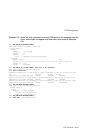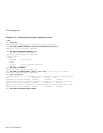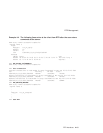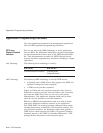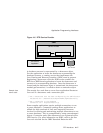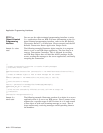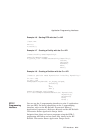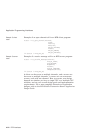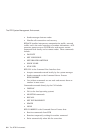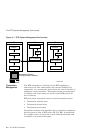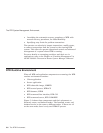Application Programming Interfaces
Example 4–6 Starting RTR with the C++ API
//Start RTR.
RTR rtr;
rtr.Start();
Example 4–7 Creating a Facility with the C++ API
//Create facility named "myFacility".
RTRFacilityManager FacMgr;
rtr_status_t sts = FacMgr.CreateFacility("myFacility",
"router",
"frontend",
"backend",
false,
false) ;
Example 4–8 Creating a Partition with the C++ API
//Create a partition named "myPartition" in facility "myFacility."
int low = 100;
int max = 199;
RTRKeySegment Key100To199( rtr_keyseg_unsigned,
sizeof(int),
0,
&low,
&max );
RTRPartitionManager PartitionMgr;
sts = PartitionMgr.CreateBackendPartition( "myPartition",
"myFacility",
Key100To199,
false,
false) ;
RTR C
Programming
Interface
You can use the C programming interface to write C applications
that use RTR. For more information on the C programming
interface, refer to the HP Reliable Transaction Router C
Application Programmer’s Reference Manual and the HP Reliable
Transaction Router Application Design Guide.
Snippets from client and server programs using the RTR C-
programing API follow and are more fully shown in the HP
Reliable Transaction Router Application Design Guide.
RTR Interfaces 4–21



